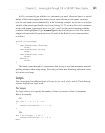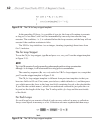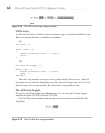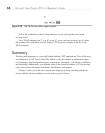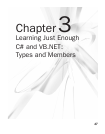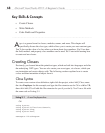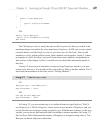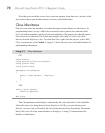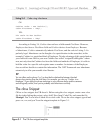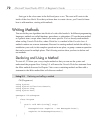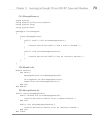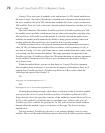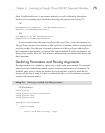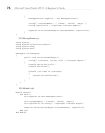
Chapter 3: Learning Just Enough C# and VB.NET: Types and Members 69
{
public class Employee
{
public string FirstName;
}
}
VB:
Public Class Employee
Public Dim FirstName As String
End Class
The C# Employee class is nearly the same as the Program class that you created in the
preceding chapter, except that the class name here is Employee. In VB, you’ve only created
a module before, and the Employee class is your first class for this book. You can add
members to a class, which could be events, fields, methods, and properties. Listing 3-1 shows
an example of a field, FirstName, and you’ll learn about events, methods, and properties in
later sections of this chapter. A field is a variable in a class that holds information specific to
that class.
Listing 3-2 shows how to instantiate an object of type Employee, which is your new
custom type, and use it. You would put this code inside of Main or another method. You’ll
learn more about methods in the later section “Writing Methods.”
Listing 3-2 Code that uses a class
C#:
Employee emp = new Employee();
emp.FirstName = "Joe";
VB:
Dim emp As New Employee
emp.FirstName = "Joe"
In Listing 3-2, you can see that emp is a variable declared as type Employee. The C#
new Employee() or VB New Employee clause creates a new instance of Employee, and you
can see that this new instance is being assigned to emp. With that new instance, via the emp
variable, you can access the Employee object, including its instance members. In Listing 3-2,
the FirstName field of that particular instance of Employee is assigned a string value of "Joe".
Here you see that an object can contain data.



